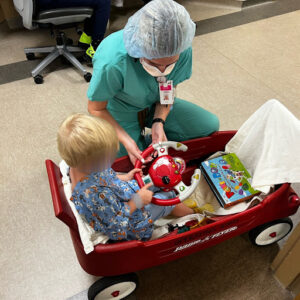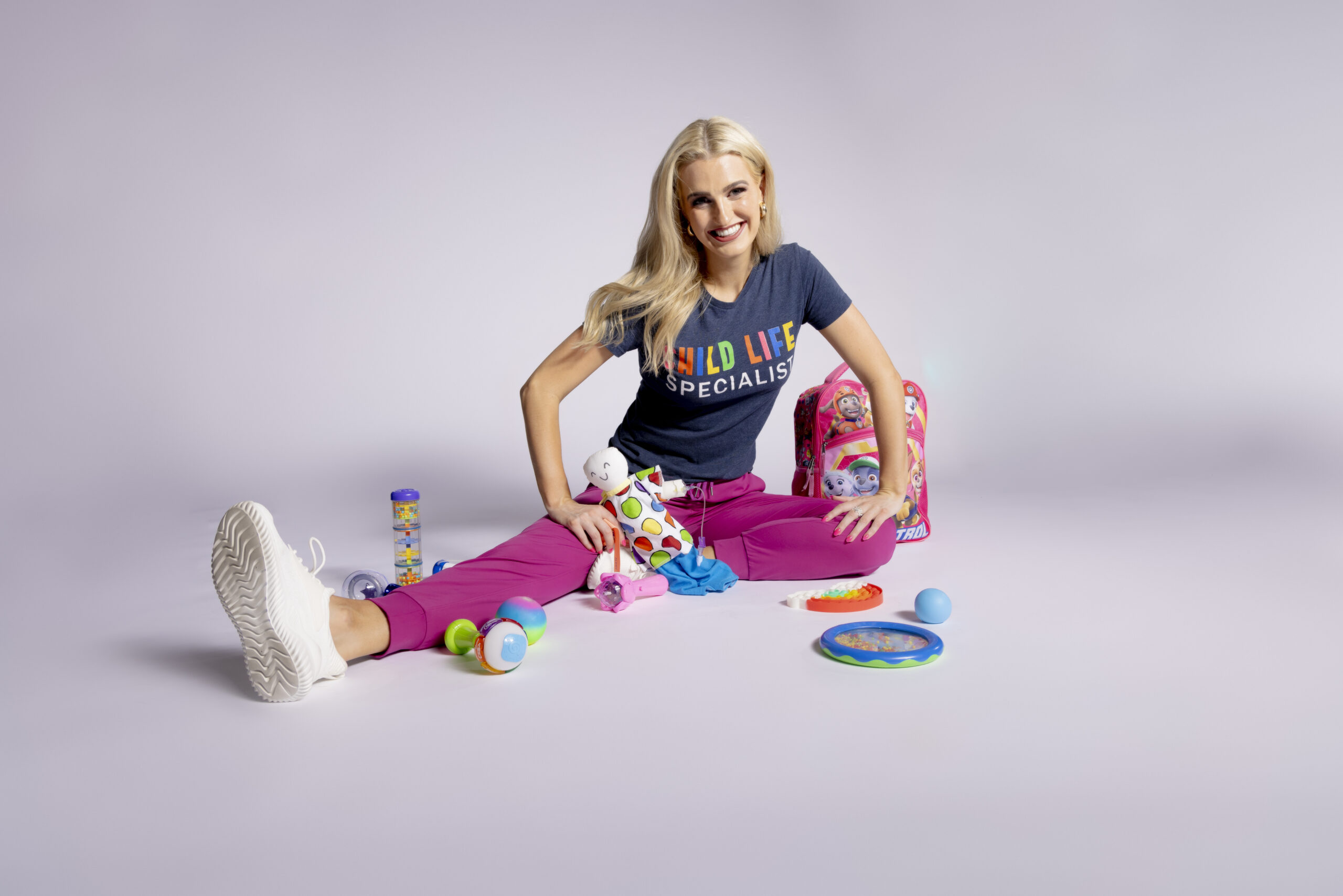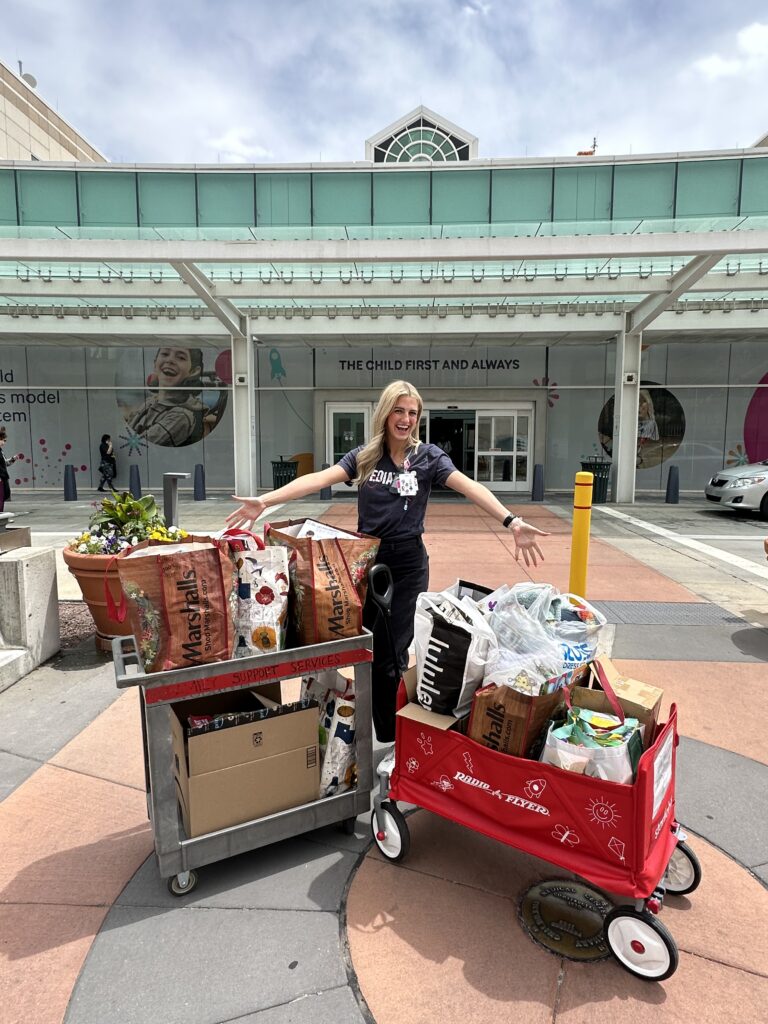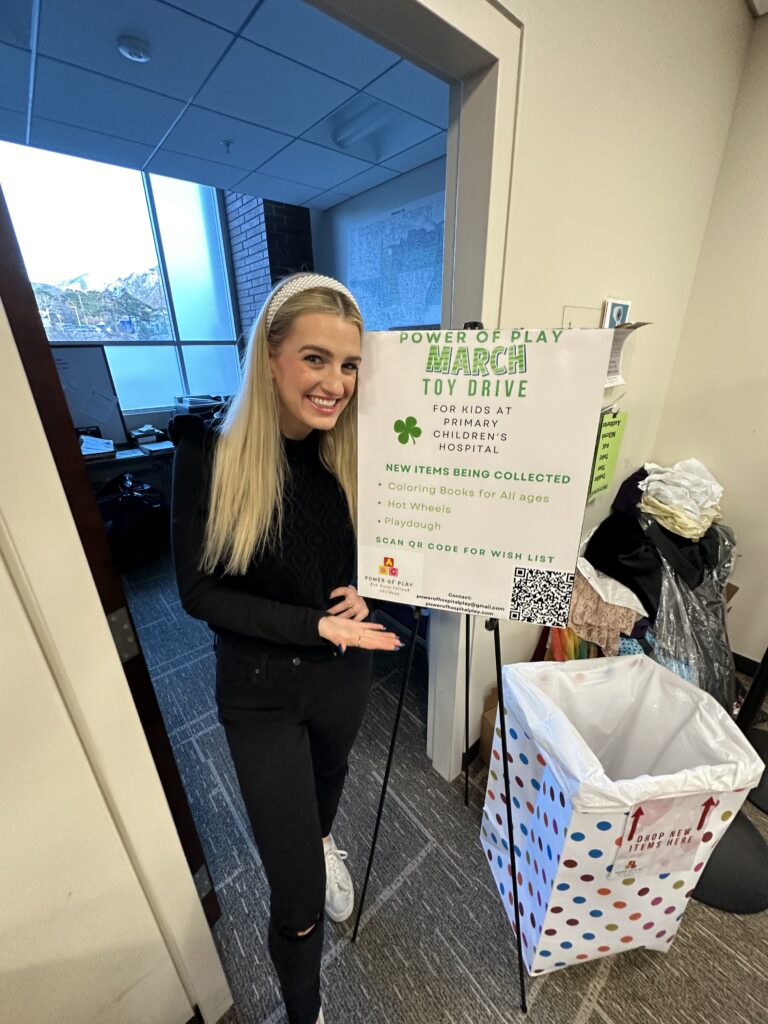My Work as a Certified Child Life Specialist
I have the best job in the world! I am a Certified Child Life Specialist (CCLS) in the Emergency Department and Rapid Treatment Unit at Primary Children’s Hospital (PCH). A CCLS is a healthcare professional that provides psychosocial support to kids and families throughout hospitalization to aid in coping. My role is to decrease stress and increase coping throughout hospitalization.
Child life specialists wear many hats in their career, but here are just a few:
- Developmentally appropriate procedural preparation
- Diagnosis education
- Normalization of the hospital environment
- Therapeutic play
- Familiarization of hospital equipment
- Sibling support
- Grief and bereavement support/end of life mementos
- Procedural support & distraction
- Coping tools and techniques
- Medical Play
- Non-Pharmacological pain management
My Journey to Become a Certified Child Life Specialist

My path to finding Child Life began when I started looking for volunteer opportunities my freshman year of college, after I began competing in the Miss America Opportunity. I have always had a deep interest and passion for pediatrics and psychosocial support. I was originally a nursing major, and was a Kids Crew volunteer at Primary Children’s Hospital in the Oncology/Hematology Infusion Clinic and Inpatient Unit. As a volunteer, I worked under a CCLS to provide play opportunities throughout treatment. The same day I had my orientation, and learned the role of a CCLS, I switched my major with my advisor, and haven’t looked back since!
The required steps I completed to become a CCLS:
- Bachelor’s of Science in Human Development and Family Studies with Child Life Emphasis and Minor in Health Promotion and Education
- Minimum 100 hours working with children in health care settings and/or programs designed for children with special needs- I completed these at Camp Hobe & PCH Oncology Unit
- Minimum 100 hours working with well children- I completed these as a preschool teacher & nanny
- 10 required courses from the Association of Child Life Professionals
- 120 hours Child Life Practicum- I completed two; one at PCH in the Children’s Medical Unit, and Riverton Same Day Surgery/Inpatient Unit, and one in Sweden traveling to 5 hospitals throughout the country
- 600 hour clinical Child Life Internship- I completed mine in Rochester, New York at Golisano Children’s Hospital
- Pass the Certification Exam
Studies show that 90% of children have symptoms of post-traumatic stress, depression, and anxiety after hospitalization. Research has proven that equipping children with play opportunities can drastically decrease their stress. This is what I call the “Power of Play”!
My Community Service Initiative
My community service initiative is called “Power of Play: Advocating for Hospitalized Children.” My initiative aims to provide play items and opportunities to hospitalized children, while involving the community in hands-on service opportunities through the charity that I have founded, the Power of Play, through toy drives and service projects. Within the two years of the charity’s conception, over 5,000 play items have been donated, positively impacting the trajectory of a child’s hospital experience.
Hospitals rely on community support for play items-and simply put, there isn’t enough! As a child life specialist, I see firsthand the items that are most utilized. Hospital’s biggest needs are one time use items that can’t be sanitized; playdough, blankets, stuffed animals, coloring books, crayons, colored pencils, and stress balls.
How Play Impacts Hospitalized Kids
By providing a play experience, it assists with building rapport with staff, normalizing the environment, and offering opportunity for autonomy in an environment where there is none. Whether it is engaging in toys for an infant during a CT scan, teaching a child about receiving a broviac line for their dialysis treatments through medical play, providing fidget items at the bedside in the emergency department after a traumatic accident, or implementing memory making opportunities and comfort for siblings and parents during the tragic circumstance of a child losing their life at the hospital; play is powerful and completely changes the trajectory of both a child and families experience.
Play provides comfort, familiarity, and opportunities for expression throughout hospitalization.
One of my favorite examples I’ve had as a CCLS of play impacting a child’s hospital experience was when a child was so terrified to receive an IV, that they were hiding in the corner under their bed, tearful. By bringing in play items of playdough and a stuffed animal, I was able to engage the child in play, where their stress was returned back to baseline, the child was able to come out from hiding, and I was able to utilize a medical play buddy doll to teach them with developmentally appropriate and honest language of all of the steps of getting an IV on the doll. This minimized the child’s misconceptions and allowed a safe space to explore the medical supplies and make choices about the procedure. The child chose to play with a Minion’s ISpy book, and stress ball throughout the procedure. After the needle stick, and the IV was taped, the child looked at me and said “That was fun! I want to come back to the hospital everyday!”
Get involved
Do you want to make an impact for hospitalized children in your community? Consider donating to the Power of Play through venmo @powerofplay where 100% of donations go to play items for hospitalized children. Or visit our Amazon Wish List to make a donation.
If you would like to host a toy drive or a service night (craft kits, tie blankets, etc.), or would like me to present to a group on the impact of play on hospitalized children and their families, email powerofhospitalplay@gmail.com.



